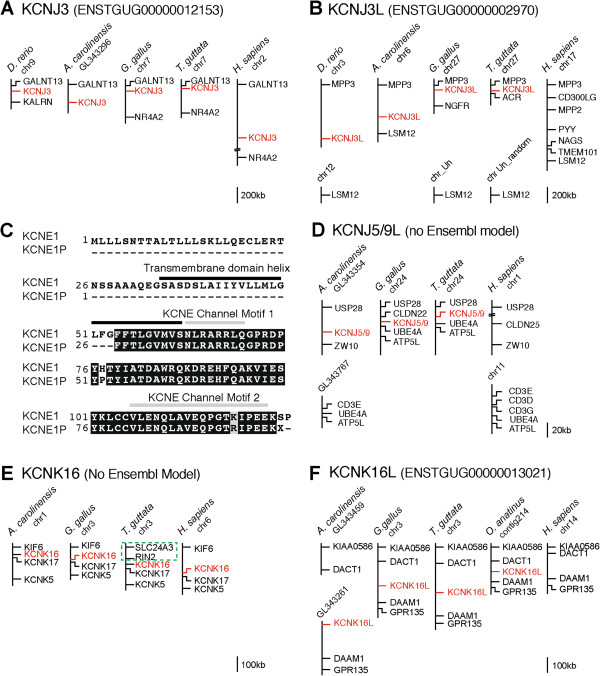Figure 2.
Syntenic analysis of novel K-Channel genes (KCNJ3L, KCNE1P, and KCNK16L) that are absent in humans. (A,B and D-F) Schematic representation of conserved chromosomal loci in select vertebrate species that contain orthologs of KCNJ3(A), KCNJ3L(B), KCNJ5/9 L(D), KCNK16(E), and KCNK16L(F). See Results text for details. The relative position of each K-Channel gene of interest is indicated in red; intervening genes are indicated in black. The chromosome or scaffold is indicated beneath each species name. Scale bars indicate the approximate distance between genes. (C) Alignment of predicted amino acid (AA) sequences for zebra finch KCNE1 and KCNE1P. The numbers on the left indicate the relative position of AA residues in each sequence; residues shaded in black are identical, those in gray denote a conservative substitution. The position of highly conserved K-Channel transmembrane domain helices, as well as KCNE Channel signature motifs are indicated in black and grey, respectively.

